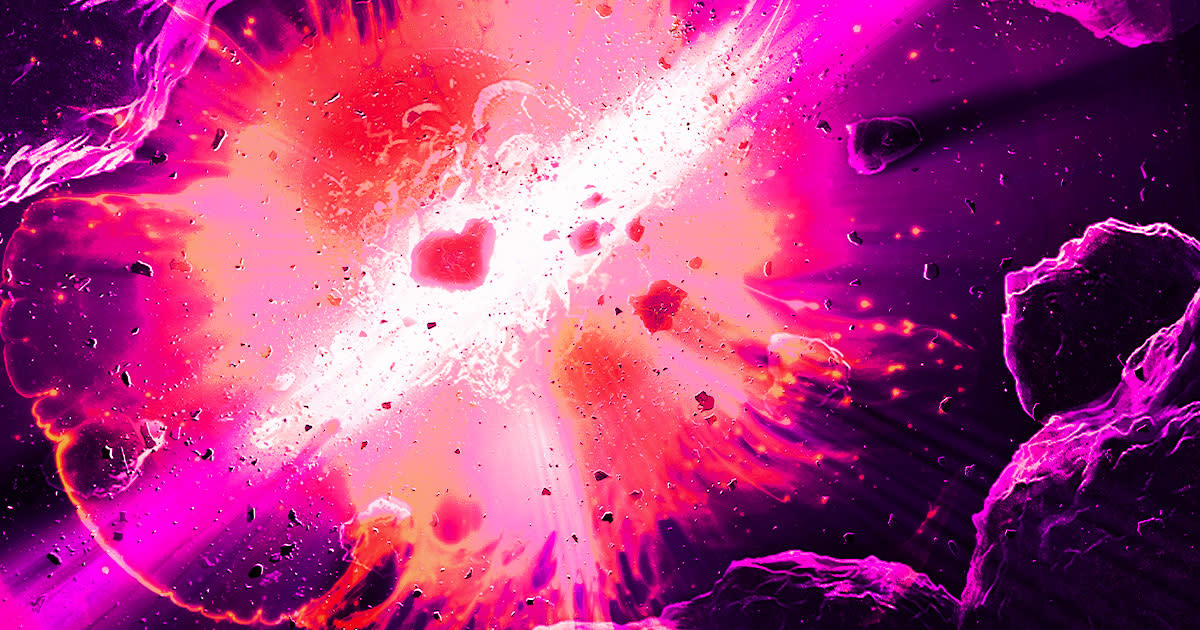James Webb Spots Epic Collision Between Giant Asteroids

Worlds Collide
In a nearby star system, two giant asteroids appear to have slammed into each other in an epic collision that kicked up a cosmic amount of dust — and it was NASA's James Webb Space Telescope that captured evidence of the cataclysmic event.
The apparent collision took place in the star system Beta Pictoris, which is about 63 light years away from Earth and has two gas giants named Beta Pictoris b and c, according to a statement on the research from Johns Hopkins University.
Christine Chen, a university astronomer, had first studied this star system back in 2004 and 2005, analyzing infrared data from Beta Pictoris that was captured by the Spitzer Space Telescope. During that time period, she noticed two large clouds of dust made of crystalline silicates, which are particles common on Earth and associated with young stars and other cosmic bodies, according to the university.
But in 2023, the James Webb observed that all that dust — finer and smaller than pollen and having a combined heft more than 100,000 times that of the asteroid that killed the dinosaurs — had disappeared.
Chen now surmises that Spitzer had caught the aftermath of two giant asteroids smashing into each other, with at least one of them pulverized into dust — a cosmic collision, in other words, with a scale and ferocity that boggle the mind.
Rock Star
Chen presented the research on Beta Pictoris, which she coauthored with several colleagues, at the 244th Meeting of the American Astronomical Society earlier this month, according to the university.
What's doubly cool about Beta Pictoris is that the star system is a bushy-tailed whippersnapper at just 20 million years old, compared to the 4.5 billion years of our venerable solar system.
Because it's so young, Beta Pictoris could potentially give us a glimpse of what the early years of our solar system must have looked like, according to Chen's research. It's at an age where gas giants have come into existence while rocky planets like Earth are possibly just forming, and mammoth asteroids are still whizzing about in the star's "terrestrial planet zone."
"The question we are trying to contextualize is whether this whole process of terrestrial and giant planet formation is common or rare, and the even more basic question: Are planetary systems like the solar system that rare?" Johns Hopkins astrophysics doctoral student and study coauthor Kadin Worthen said in a statement from the university. "We're basically trying to understand how weird or average we are."
More on asteroids: Scientists Surprised to Find Distant Asteroid is Very Soggy

